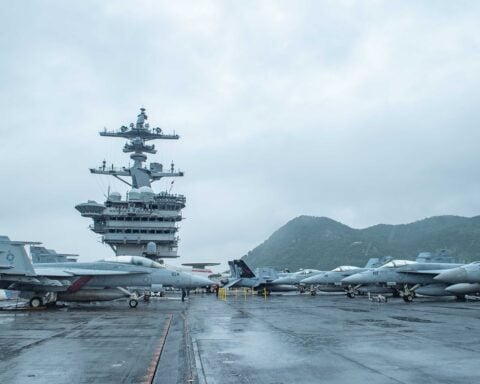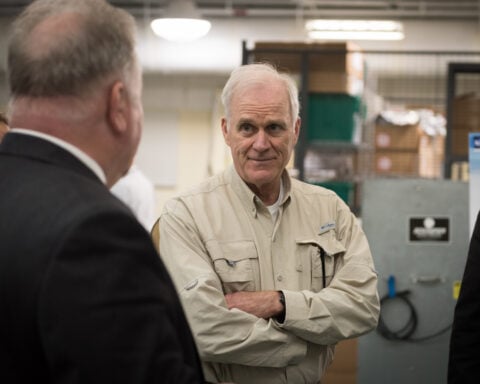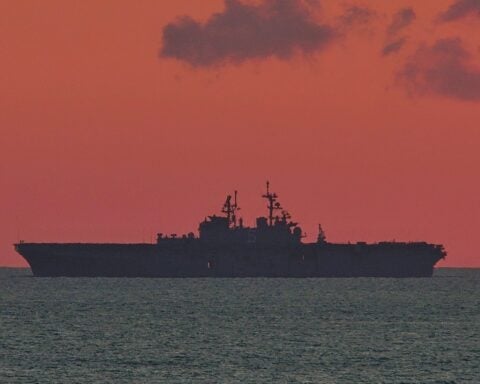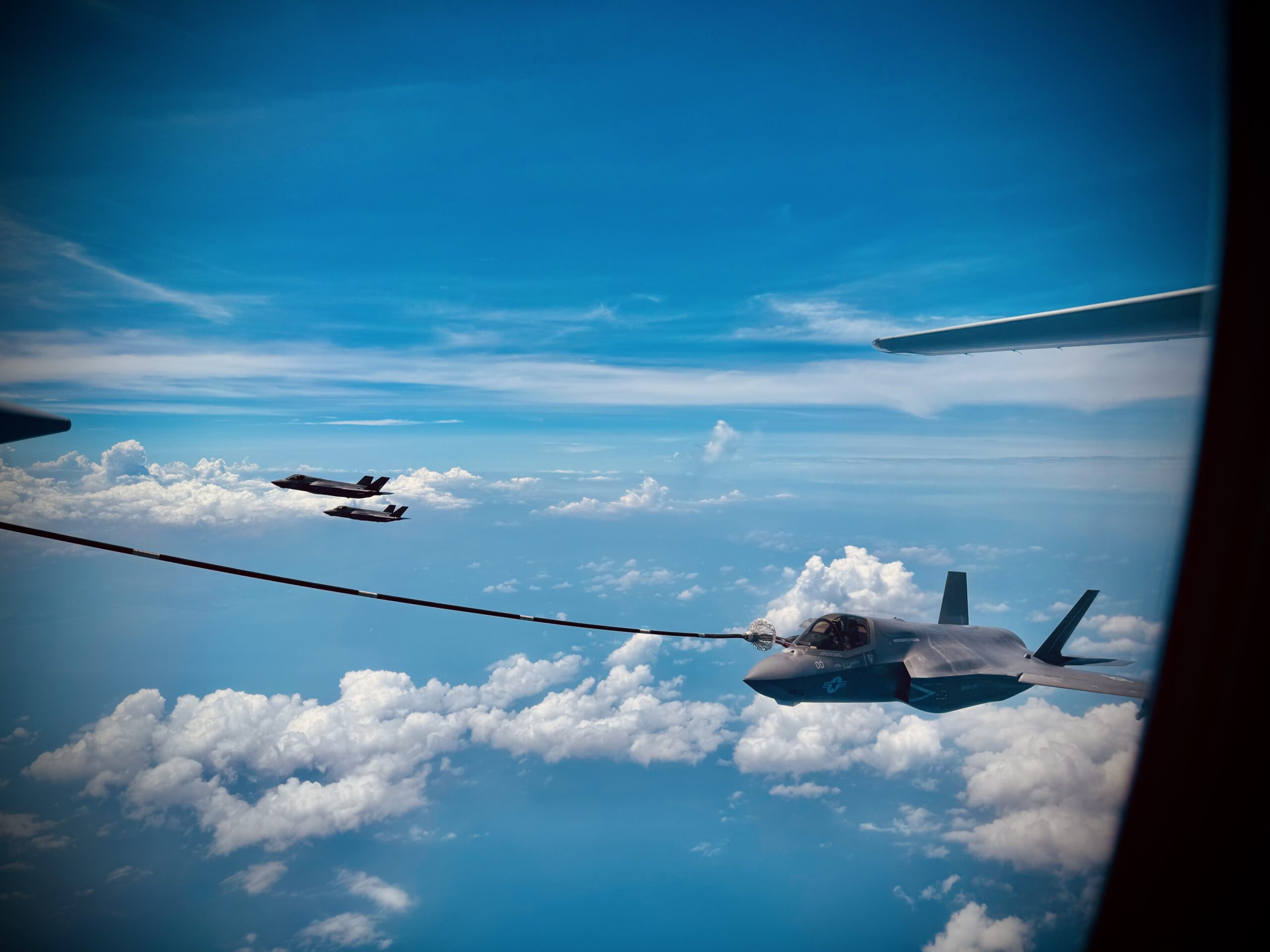
Four U.S. Marine F-35B Lighting II dropped seven GBU-32 500-pound guided bombs on targets floating off the coast of Western Luzon in the South China Sea in a first-of-its-kind bilateral exercise last week.
During the strike mission, Brig. Gen. Robert Brodie, commander of I Marine Expeditionary Force, and Brig. Gen. Romeo. Racadio, deputy commandant of the Philippine Marine Corps, stood side-by-side at the latter force’s headquarters in Fort Bonifacio during June 15’s Marine Aviation Support Activity 2024 littoral live-fire exercise. The I MEF commander said that this activity was the first time he was able to realistically command and control forces with a foreign commander.
While MASA is smaller than the annual Balikatan drills, which usually include the lion’s share of activities and new equipment from U.S. and Philippine forces, it’s teaching valuable lessons on how to fight jointly, Brodie said.
“I’ve never been able to do that outside of a very scripted way,” Brodie told USNI News in a phone interview following the exercise.
“This year was the most fluid event I’ve ever been involved with. And literally sitting next to another general officer, the deputy commandant of the Philippine Marine Corps, having a conversation about target engagement, rules of engagement and how we would employ our assets together. First time I’ve ever done anything like that. It was absolutely amazing.”
Using intelligence from Philippine Navy and Air Force drones, the two commanders and their staff relayed orders to a C-130 orbiting near the exercise area that hosted the aviation command element. From there, this element passed the necessary targeting information to four F-35B from the “Black Sheep” Marine Fighter Attack Squadron (VMFA) 214. Once the F-35Bs found their targets, this information was relayed back to the combined command center where Brodie and Racadio went through the real objective of the exercise – bilateral fires coordination.
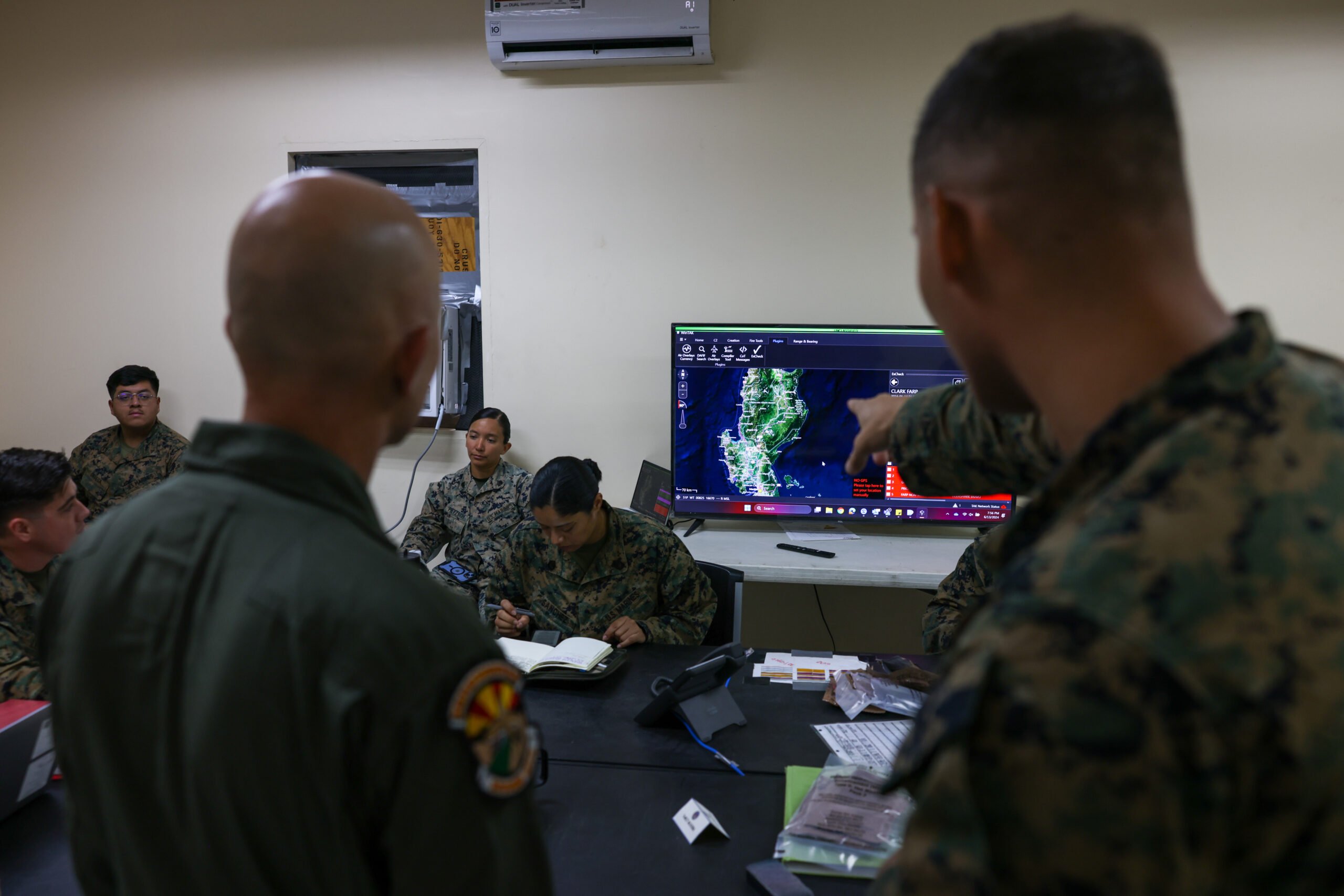
“We talked, went through a simulated rules of engagement, simulated targeting engagement authority and then the Marines pushed that information to me. In our command and control center, it was literally a Philippine Marine, U.S. Marine, Philippine Marine by functional area, they briefed up myself and Gen. Romeo. And we discussed it and gave approval to go for the strike, Brodie said.
“It was much bigger than the F-35s just striking.”
The U.S. Air Force’s 199th Fighter Squadron also provided a defensive combat air patrol consisting of two F-22A Raptors for the Marine Corps aircraft.
Brodie stated that it was a “mistake” to think that exercises like MASA were just U.S.-led teaching opportunities for Philippine forces.
“From a tactical perspective, they are hardened warriors,” he said.
“They know how to operate in all weather, tough weather, in heavy terrain jungle environment. These are things that U.S. Marines oftentimes do not have the opportunity to train in and just simply don’t have the expertise in. When we get out with their Marines, they’re tough, and they really kind of show us how to survive and persist in one of the most difficult weather environments I think you could ask any soldier to survive in.”
The Philippine Marine Corps, a command under the Philippine Navy, is among the leading organizations of Manila’s military modernization program with its Archipelagic Coastal Defense Concept and missile procurement. However, with the force’s decades-long focus on international security and counterterrorism operations, technical expertise from their American counterparts was identified by Brodie as an area where bilateral training can assist.
While MASA 2024 concluded last Friday, talks on activities for next year’s exercise have already begun, according to Brodie. Coastal patrolling and the deployment of U.S. Navy assets were mentioned as ways to bring Marines from both countries out to sea during MASA. Brodie also met with the Philippine Air Force to discuss opportunities for training with their fighter aircraft.
“Had an opportunity to talk to a lot of general officers and some flag officers in the Philippine military and the conversations we have are very there. The direction we’re running in is the same. The future is incredibly bright, the way I see it,” he said.


